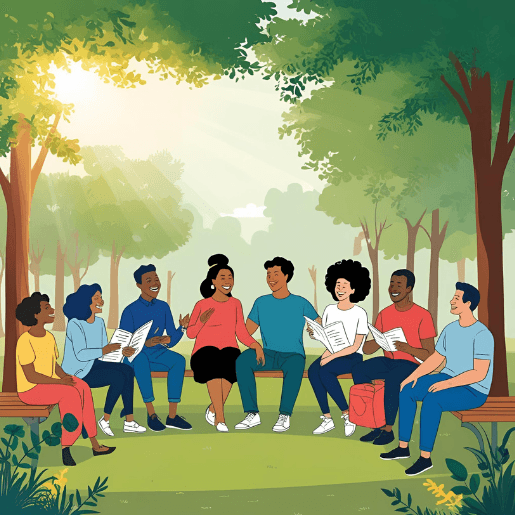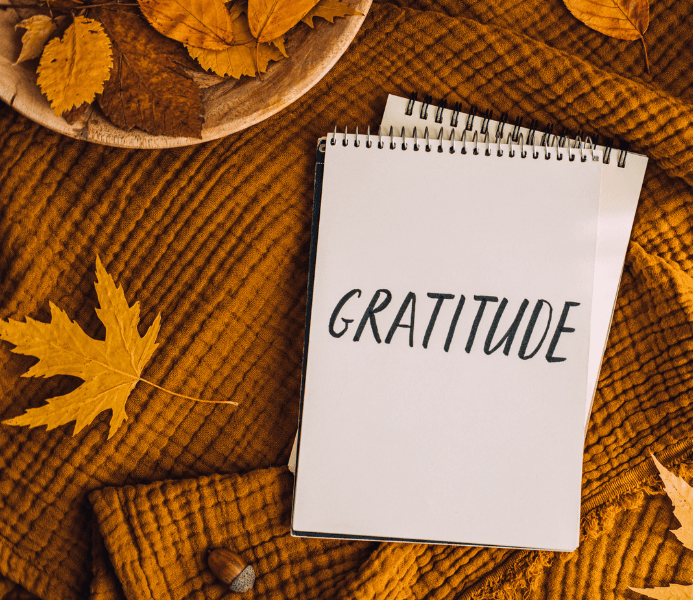Life is a whirlwind. Between stress, obligations, and overthinking, our minds rarely pause to appreciate what’s going well. That’s where gratitude journaling steps in. It’s not just about writing what you’re thankful for—it’s a healing technique that rewires your brain for positivity, calm, and emotional resilience.
In this guide, we’ll break down the science behind gratitude practices, show you how to start journaling for emotional healing, and share real, powerful prompts that go beyond the usual “I’m grateful for coffee” lists. Plus, we’ll link you to beautiful journals and planners to turn this into a daily ritual.
Why Gratitude Matters in Our Fast-Paced World
Hey there! Has there ever been a time when you felt like life was going a mile a minute and you were just trying to keep up? Trust me, you’re not alone. Ever since we moved to this daft, frenetic society we all live in, it has become quite common to miss out on the little things.
That’s where gratitude steps in and trust me, it can be a life-changer. Gratitude isn’t (only) about uttering the word “thanks” if someone holds the door open for you (though that’s a good thing too!). That’s a complete mindset; a perspective of life that can literally change how you see your life. And one of the best things you can do to harness this superpower? The gratitude journal.
So in this post we are going to take a deep drive into gratitude journaling. We’ll discuss how this simple practice can improve your emotional wellness, increase resilience, and simply make life a hell of a lot better. So get yourself comfortable, grab a drink and let’s get into the journey of becoming a more grateful person.
What is Gratitude Journaling?
At its core, gratitude journaling is the act of writing down things you’re grateful for. But it’s more than a feel-good exercise. It’s a transformational habit backed by psychology.
Researchers have found that when you regularly reflect on what you appreciate—people, events, feelings—it shifts your mental focus from scarcity to abundance. That tiny shift? It creates ripples in your mental health, emotional balance, and even physical well-being.
What’s the Deal with Gratitude Journals?

The Basics of Gratitude Journaling
So, what is a gratitude journal, exactly? Consider it your own notebook of happiness. It’s a space where you consistently jot down things you’re grateful for. Simple, right? But don’t let that ease fool you — this small practice sure packs a wallop for your mental health.
The point is to take a few moments every day (or as often as you see fit) to think about the good things in your life. This can be something big, like “I am thankful for my fabulous friends,” or something small, like “That first sip of coffee this morning was divine.”
Also Read:-How To Write In Your Journal
Now, you might be thinking, “Can writing down a few good things really make that much difference?” The short answer is: Heck yes! Here’s why:
- It shifts your focus: When you actively look for things to be grateful for, you start noticing more positive stuff in your life.
- It rewires your brain: Regular gratitude practice can actually change the way your brain processes emotions, making you more resilient to stress and negative experiences.
- It improves your mood: Focusing on the good things can help lift your spirits, even on tough days.
- It enhances relationships: When you appreciate the people in your life, you’re more likely to express that appreciation, which can strengthen your connections.
Getting Started with Your Gratitude Journal

Choosing Your Journal
First things first – you need a journal. But here’s the cool part: it can be anything you want! Some options to consider:
- A fancy, dedicated gratitude journal with prompts
- A simple notebook
- A notes app on your phone
- A document on your computer
Whatever resonates with you — in “the greatest sense,” he said. If you want the feel of the pen on the paper, go old school. If you’re on your phone all the time anyway, a digital option could be more your speed.
Setting a Routine
Next up, let’s discuss about the when to journal. The most critical part is to find a time that works for you and stick to it. Here are some common times:
- Right away upon waking to get your day started right
- During a lunch break for a midday boost
- At night before you go to sleep to recall the good things that happened to you during your day
Again, keep in mind that consistency is critical. It may seem a little contrived at first, but stick with it. Like any new habit it becomes easier (and more fun) with practice.
What to Write
It can be daunting to face a blank page. Well, reader, fear not, because I’m here to parse the clues for you. Here are some ideas to get you started: List three things you’re grateful for today
- CREATE a Gratitude list of at least 3 things you are grateful for today.
- Write about a person who made a positive impact on your life
- Note something beautiful you saw or experienced
- Think about an obstacle you overcame and what you learned in the process
The possibilities are endless. The important thing is to be specific and really dive into why you’re grateful for each item you write down.
Supercharging Your Gratitude Practice

Going Beyond Basic Journaling
Alright, so you’ve got the basics down. You’re writing in your journal regularly, and you’re starting to feel the benefits. But why stop there? Let’s kick it up a notch with some advanced gratitude techniques:
- Gratitude Letters: Once in a while, write a detailed letter to someone you’re grateful for. You don’t have to send it (though you can if you want to), but the act of writing it can be incredibly powerful.
- Gratitude Walks: Go on a walk and pay attention to what you’re grateful for. There’s so much to savor when you stop to notice: the warmth of the sun, the chirping of birds, the smell of newly cut grass. Gratitude Jar: Every day, write on a tiny piece of paper something you are grateful for and drop it in a jar. Read through your notes at the end of the year for a serious disaster-level happiness boost.
- Gratitude Jar: Each day, write on a small slip of paper something you are grateful for and add it to a jar. And make the effort to read through all of your notes at the end of the year for big happiness boost.)
- Gratitude Meditation: Take a few minutes every day to sit and quietly reflect on the feeling of gratitude in your own body. The can help ground your practice and make gratitude a more visceral experience.
Dealing with Challenges
Let’s be honest — there are days when it’s much easier to feel grateful than others. Maybe you’re having a rough patch of your life, or you’re just in a funk. Here are some techniques for those rough spots:
- Start small: If you can’t think of anything big to be grateful for, focus on tiny things. The fact that you have clean water to drink or a comfortable bed to sleep in can be enough.
- Practice self-compassion: It’s okay to have bad days. Don’t beat yourself up if you’re struggling to feel grateful. Instead, be kind to yourself..
- Look for the silver lining: Even in tough situations, there’s often something to learn or a hidden opportunity. Try to find that positive aspect, no matter how small.
- Read past entries: A lot of times when you are sad re-reading your entries makes you realize how much good is there in life.
The Science Behind Gratitude

What Reinforcement Research Tells Us about Thankfulness Well
I understand — others of you may be like, “Wow, that is nice, but where is the evidence?” Well, buddy, science has some ideas on that. The effects of gratitude have been studied by researchers for decades, and their findings are quite mind blowing.
And a study published in the Journal of Personality and Social Psychology found people who wrote gratitude journals for only three weeks at a time reported feeling happier and more satisfied with their lives. They even exercised more and made fewer visits to the doctor than those who were not thankful.
Another study from the University of California, Davis, found that regular gratitude practice was associated with a raft of benefits for participants:
- Stronger immune systems
- Lower blood pressure
- Higher levels of positive emotions
- More joy and pleasure
- More optimism and happiness
Pretty impressive, right? But it gets even better.
Gratitude and the Brain
Neuroscientists have discovered that gratitude alters your brain. Gratitude helps you feel good by releasing two feel-good neurotransmitters, dopamine and serotonin. This feeling also not only makes you feel good in the moment, it can also have long-lasting effects on your mental health.
Regular gratitude practice has been found to:
- Boost neural activity in the medial prefrontal cortex, a region linked to learning and decision making
- Down-regulate activity in the amygdala, the region of the brain that processes negative emotions such as fear and anxiety
- It rewires neural pathways, with time making it easier to feel positive thoughts and emotions
This means that the more you practice feeling grateful, the more your general feelings of positivity come to you easily. It’s like exercising a muscle — the more you practice it, the stronger it becomes.
Integrating Gratitude into Your Daily Life

Beyond the Journal
Keeping a gratitude journal is amazing but you need to begin integrating gratitude into your daily life for the real magic. Here are some suggestions for how to do that:
- Gratitude Alarms: Program your phone to remind you to stop and think of something you are grateful for in the moment throughout your day.
- Gratitude at Meals: Before eating, take a moment to appreciate your food and everyone involved in getting it to your plate.
- Thankfulness in Conversations: Try to thank more to others in every conversation. A plain “I really appreciate you” can make a big difference.
- Gratitude in Challenges: When faced with a difficult situation, try to find something to be grateful for within it. This can help shift your perspective and make the challenge feel more manageable.
Teaching Gratitude to Others
Once you begin reaping the benefits of gratitude, you may want to spread the love. Here are some tips for spreading the gratitude bug:
- Start a gratitude practice with your friends or family. You might have a gratitude sharing time at dinner, or start a group text chain in which everyone shares one thing they are grateful for every day.
- If you have kids in your life, teach them about gratitude. Make it a fun game to spot things to be thankful for throughout the day.
- Share your gratitude journey on social media.
The Long-Term Impact of Gratitude
Building Emotional Resilience

One of the coolest things about practicing gratitude is how it can help you become more emotionally resilient over time. When you regularly focus on the positive aspects of your life, you’re better equipped to handle the not-so-great stuff when it comes along.
Think of it like building an emotional savings account. Every time you practice gratitude, you’re making a deposit. Then, when life throws you a curveball, you have a reserve of positive emotions to draw from. This doesn’t mean you won’t feel sad or frustrated when bad things happen, but you’ll likely bounce back faster and with a more balanced perspective.
Read more about Building Resilience: Master the Art of Thriving
Improving Relationships
Gratitude can also have miracles for your relationships. A few things happen when you regularly express gratitude for the people in your life:
- You start noticing more of the good things they do
- They feel more valued and appreciated
- You’re more likely to do nice things for them in return
It’s a positive cycle that can lead to stronger, more fulfilling relationships across the board – from your closest friendships to casual acquaintances.
Overcoming Gratitude Roadblocks
When Gratitude Feels Forced
All right, let’s get the elephant in the room out of the way. At times, feeling grateful can seem, uh, contrived. Perhaps you’re having a really hard time, or maybe you simply don’t feel like counting your blessings. That’s perfectly normal and fine.
Here’s the thing: gratitude isn’t about ignoring the bad stuff or pretending everything is sunshine and rainbows. It’s about acknowledging that even when things are hard, there are still good things in your life – however small they might seem.
If you’re struggling, try this:
- Acknowledge how you’re feeling without judgment. It’s okay to not feel okay.
- Look for tiny things to appreciate. Maybe it’s the warmth of your blanket or the taste of your favourite snack.
- Be grateful for your own strength in getting through tough times.
Remember, it’s the practice that matters, not the perfection.
Avoiding Toxic Positivity

While we’re on the subject, let’s talk about toxic positivity. This is when you try to be positive all the time, even in situations where it’s not appropriate or helpful. Gratitude isn’t about ignoring negative emotions or experiences – it’s about finding balance.
It’s important to allow yourself to feel and process all your emotions, including the not-so-great ones. Gratitude should complement your emotional experiences, not replace them.
Wrapping It Up: Your Gratitude Journey Starts Now
Ok, we just covered a lot of material here. If you’re new to gratitude journaling and want to learn more about it, there are some good articles in here to read, from the principles of gratitude journaling, to the science of why gratitude journaling works, to some tips on navigating some common pitfalls. So, all of this information means nothing if you aren’t practicing it, right?
So here’s my challenge to you: Make your gratitude journal today. Right now, even. It doesn’t have to be perfect or profound. Simply jot down three things you’re thankful for. It could be as simple as:
- The comfy chair I’m sitting in
- The fact that I have access to information like this blog post
- What the last meal that I ate tasted like
See? Not so hard, right? And those details are just the tip of the iceberg. Once you start implementing gratitude in your everyday life, you’ll probably find things to be thankful for everywhere you turn. It’s almost like putting on a pair of “gratitude glasses” that allow you to see the world through a whole new lens.
Remember, this is a journey. Some days might be easier than others, and that is OK. The key is to continue working at it. Over time, you’re going to strengthen that emotional immune system, build those relationships, and just feel better about your life.
Gratitude journaling is a no-brainer for elevating emotional wellness and developing resilience. When we express gratitude for what we have on a daily basis, it can quickly change our focus from stress and negativity to one of abundance and peace. Discernment not denial — as if everything is okay — things have not been okay for the millions of people who suffer every day, but those feelings, contexts, circumstances need more than the binary of secure or insecure attachment patterns. So why not give it a try? Perhaps your future self will be very thankful for it.
FAQs
- How many times a week should I write in my gratitude journal?
You want to practice every day — but even a few times weekly is great. - What if I can’t think of anything to be grateful for?
Start with simple things like having food to eat or a roof over your head. With practice, you’ll find more to appreciate. - Can I type my gratitude journal instead of writing by hand?
Absolutely! Choose whatever method feels most comfortable and sustainable for you. - How long should my gratitude entries be?
There’s no set length. Some days you might write a paragraph, others just a sentence or two. Quality matters more than quantity. - Will gratitude journaling solve all my problems?
While it’s a helpful tool, it’s not a cure-all. It’s best used as part of a broader approach to mental health and well-being.
Do you feel ready to heal one page at a time? Pick up your journal, download our template, and start practicing gratitude now. And while you’re at it, seek more wellness methods at mind-waves. com to feed your mind, every day.
Disclaimer :-This is for informational purposes only and is not a substitute for professional medical or mental health advice. Seek advice from a knowledgeable professional for assistance.

